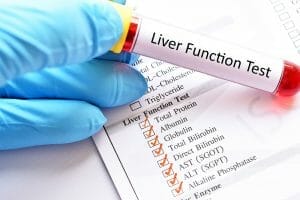
Almost 3 of the 10 people you will see walking around your home or coming to seek health have a hidden problem – a fatty liver without alcohol being the primary cause. Non-alcoholic Fatty Liver (NAFLD) we propose is the fingerprint of the impending collapse of developed societies. It is the liver’s direct expression of metabolic syndrome and for most people it’s a great unknown.
There exists no drug treatment to correct or reverse this condition, but you and your toolbox have all the necessary elements to capture the process and reverse it. Because NAFLD has become a major global health burden, leading to increased risk for cirrhosis, hepatocellular carcinoma, type-2 diabetes and cardiovascular disease and as the leading cause of chronic liver disease in the UK and US its going to end up as a diagnosis attached to many of your patients.
People in their 40s are greatest at risk, even more so if diabetic and or overweight, but increasingly in line with the expansion of childhood obesity the condition is presenting in children, nearly 40% of overweight children have a fatty liver. NAFLD can be viewed as the hepatic component of the metabolic syndrome, with insulin resistance as the key factor in the pathophysiology of both.
Numerous interconnected events involving the gut-liver axis, mitochondrial issues, oxidative stress, inflammation, poor diet, exercise frequency, sleep apnoea, bile acid formation and flow, consumption of fructose and modified corn syrup, exogenous plasticisers and agricultural chemicals have all being implicated in the generation and expansion of NAFLD.
 All of these elements are ideally suited to be managed by functional medicine approaches and lifestyle interventions including the use of supplements and probiotics.
All of these elements are ideally suited to be managed by functional medicine approaches and lifestyle interventions including the use of supplements and probiotics.
It may be that you have already started to explore the way that the incidence of this condition will direct your clinical care, so many of the interventions for NAFLD cross over with other dedicated strategies that include multiple points of intervention that understanding the impact of liver tissue of the strategic care, provides you with a clear opportunity to enhance clinical options and outcomes.
Becoming familiar with the generation and development of the condition is essential, numerous tests are available but only a liver biopsy is fully conclusive, as blood tests and ultrasound and scans have practical limitations. However, patterns of living, associated pathologies and a good clinical workout will provide opportunity. Interestingly the specific use of Berberine and Vitamin E have shown positive impact on liver health, and when combined with other lifestyle and gut liver strategies offer a safe and effective process of assisting the organ to recover its health and function.
In effect looking up stream to the processes involved in the generation of a fatty liver confer short and long term advantages to the patient, its where you need to be focussing your research for the future!
